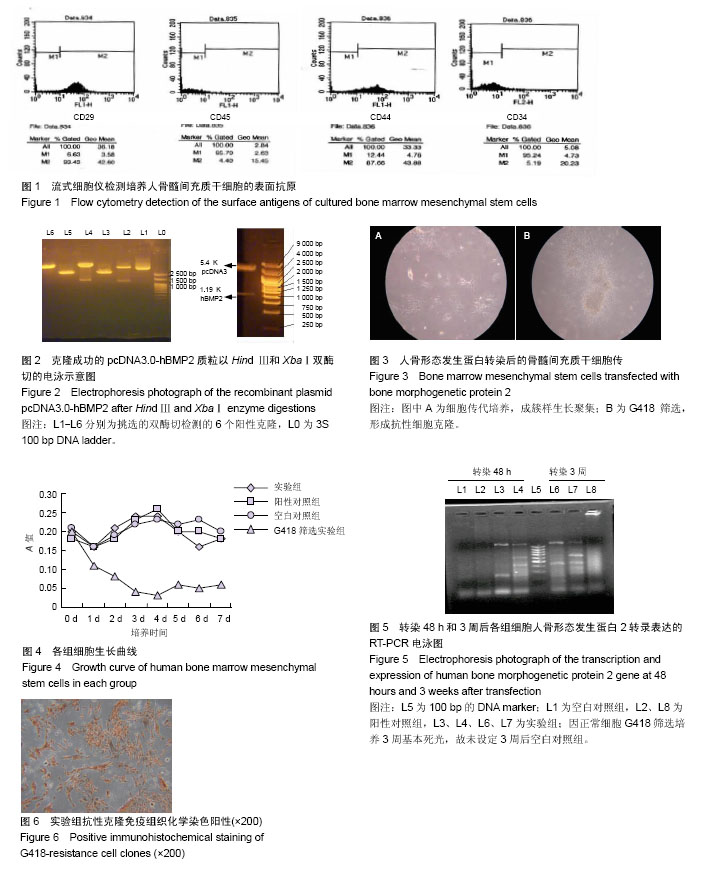| [1] Bueno EM,Glowacki J.Cell-free and cell-based approaches for bone regeneration. Nature reviews. Rheumatology. 2009; 5(12):685-697.[2] Urist MR.Bone: formation by autoinduction. Science.1965; 150(3698):893-899.[3] Crasto GJ,Kartner N,Reznik N,et al.Controlled bone formation using ultrasound-triggered release of BMP-2 from liposomes. J Control Release. 2016;243:99-108.[4] Liu X,Yu B,Huang Q,et al.In vitro BMP-2 peptide release from thiolated chitosan based hydrogel.Int J Biol Macromol.2016; 93(Pt A):314-321.[5] Salazar VS,Gamer LW,Rosen V.BMP signalling in skeletal development, disease and repair.Nat Rev Endocrinol. 2016; 12(4):203-221.[6] Williams JC,Maitra S,Anderson MJ,et al.BMP-7 and Bone Regeneration: Evaluation of Dose-Response in a Rodent Segmental Defect Model.J Orthop Trauma.2015;29(9): e336-341.[7] Sierra-Garcia GD,Castro-Rios R,Gonzalez-Horta A,et al.Bone morphogenetic proteins (BMP): clinical application for reconstruction of bone defects.Gac Med Mex.2016; 152(3): 381-385.[8] Mussano F,Ciccone G,Ceccarelli M,et al.Bone morphogenetic proteins and bone defects: a systematic review.Spine(Phila Pa 1976).2007;32(7):824-830.[9] La WG,Kang SW,Yang HS,et al.The efficacy of bone morphogenetic protein-2 depends on its mode of delivery.Artif Organs.2010;34(12):1150-1153.[10] Mroz TE,Wang JC,Hashimoto R,et al.Complications related to osteobiologics use in spine surgery: a systematic review.Spine(Phila Pa 1976).2010;35(9 Suppl):S86-104.[11] Carragee EJ,Hurwitz EL,Weiner BK.A critical review of recombinant human bone morphogenetic protein-2 trials in spinal surgery: emerging safety concerns and lessons learned. Spine J.2011;11(6):471-491.[12] Evans CH,Huard J.Gene therapy approaches to regenerating the musculoskeletal system.Nat Rev Rheumatol.2015;11(4): 234-242.[13] Deschaseaux F,Pontikoglou C,Sensebe L.Bone regeneration: the stem/progenitor cells point of view.J Cell Mol Med.2010; 14(1-2):103-115.[14] Vural AC,Odabas S,Korkusuz P,et al.Cranial bone regeneration via BMP-2 encoding mesenchymal stem cells.Artif Cells Nanomed Biotechnol.2016:1-7.[15] Chang SC,Chuang H,Chen YR,et al.Cranial repair using BMP-2 gene engineered bone marrow stromal cells.J Surg Res.2004;119(1):85-91.[16] Yang Y,Jin G,Li L,et al.Enhanced osteogenic activity of mesenchymal stem cells and co-modified BMP-2 and bFGF genes.Ann Transplant.2014;19:629-638.[17] Kay MA,Glorioso JC,Naldini L.Viral vectors for gene therapy: the art of turning infectious agents into vehicles of therapeutics. Nat Med.2001;7(1):33-40.[18] Waehler R,Russell SJ,Curiel DT.Engineering targeted viral vectors for gene therapy.Nat Rev Genet.2007;8(8):573-587.[19] Somia N,Verma IM.Gene therapy: trials and tribulations.Nat Rev Genet.2000; 1(2):91-99.[20] Glover DJ,Lipps HJ,Jans DA.Towards safe, non-viral therapeutic gene expression in humans.Nat RevGenet. 2005;6(4):299-310.[21] 俞莉敏,党耕町,杨吉成,等.巢式逆转录-聚合酶链反应扩增人骨形成蛋白2全长cDNA及其真核表达载体的构建[J].中国组织工程研究与临床康复,2007,11(14):2702-2704.[22] Cha CW,Boden SD.Gene Therapy Applications for Spine Fusion. Spine (Phila Pa 1976).2003;28(15s):s74-s84.[23] Chen FM,Zhang M,Wu ZF.Toward delivery of multiple growth factors in tissue engineering. Biomaterials. 2010; 31(24): 6279-6308.[24] Gottfried ON,Dailey AT.Mesenchymal stem cell and gene therapies for spinal fusion. Neurosurgery. 2008;63(3): 380-391;discussion 391-382.[25] Immordino ML,Dosio F,Cattel L.Stealth liposomes: review of the basic science, rationale, and clinical applications, existing and potential.Int Nanomedicine. 2006;1(3):297-315.[26] Balazs DA, Godbey WT. Liposomes for Use in Gene Delivery. J Drug Deliv.2011;2011: 1-12.[27] Yin H,Kanasty RL,Eltoukhy AA,et al.Non-viral vectors for gene-based therapy. Nat Rev Genet.2014;15(8):541-555.[28] Boden SD,Zdeblick TA,Sandhu HS,et al.The use of rhBMP-2 in interbody fusion cages. Definitive evidence of osteoinduction in humans: a preliminary report.Spine (Phila Pa 1976).2000;25(3):376-381.[29] 徐丽丽,孙晓娟,郝秀仙,等.在复合成分培养基中骨髓间充质干细胞的诱导成骨[J].中国组织工程研究,2015,19(10):1501-1505.[30] Cox DBT,Platt RJ,Zhang F.Therapeutic genome editing: prospects and challenges. Nat Med.2015;21(2):121-131.[31] Kay MA.State-of-the-art gene-based therapies: the road ahead.Nat Rev Genet. 2011;12(5):316-328. |
.jpg)

.jpg)